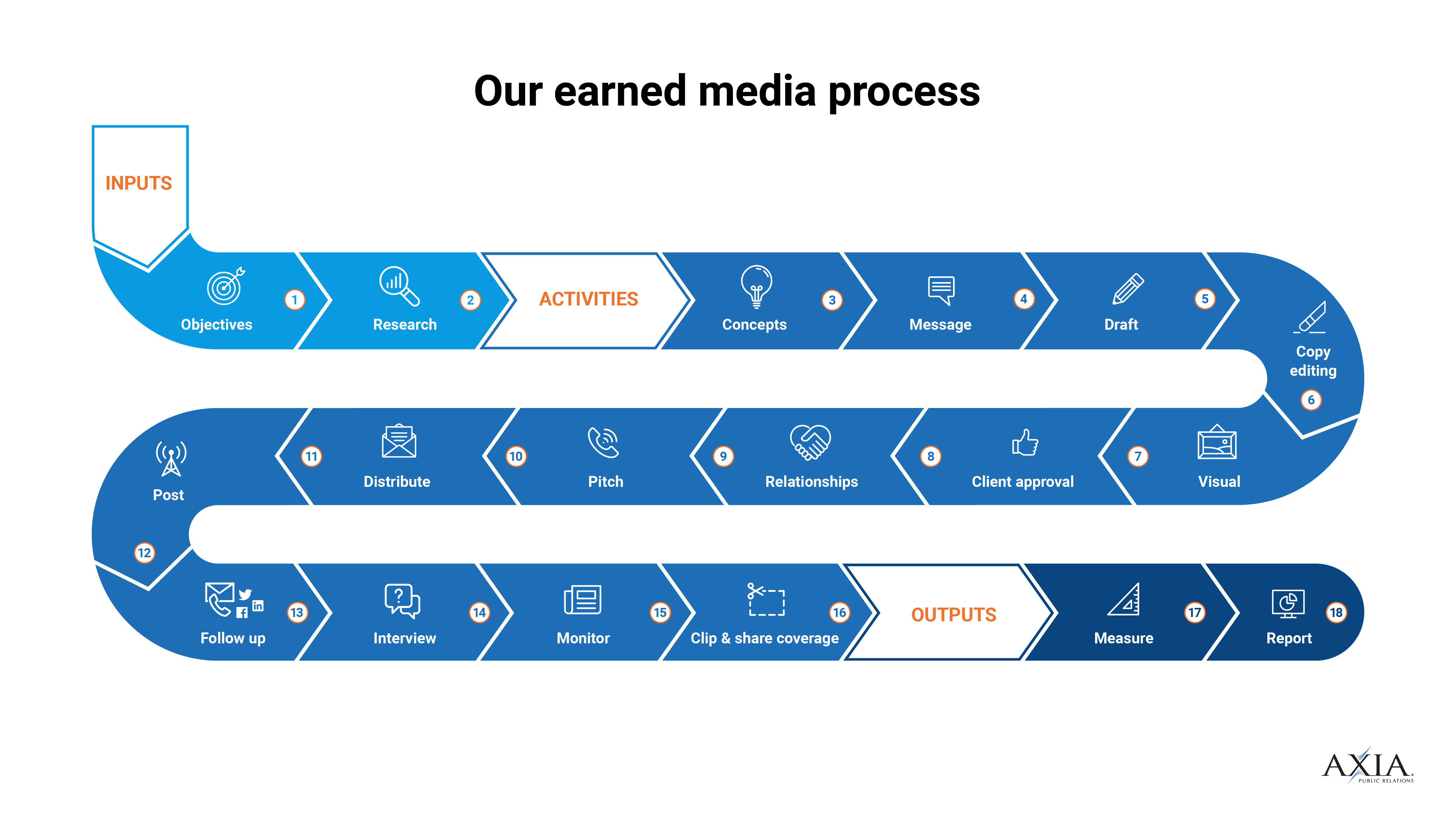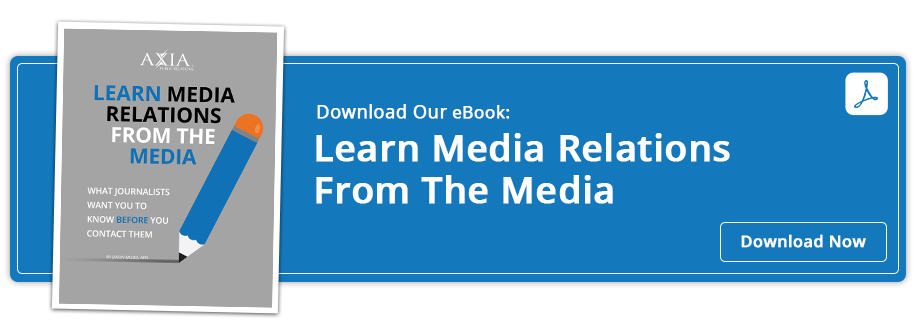What's the difference between distributing your company's news and pitching it?
By Marjorie ComerMay 25, 2020
 There’s more than one way to release company news. If you’re starting out in the public relations industry or you work for a company that wants to earn media coverage, it’s important to know the best way to share news. Here, Axia Public Relations describes the difference between distributing news and pitching it.
There’s more than one way to release company news. If you’re starting out in the public relations industry or you work for a company that wants to earn media coverage, it’s important to know the best way to share news. Here, Axia Public Relations describes the difference between distributing news and pitching it.
Distributing
Years ago, PR professionals sent news releases via telegram, mail, or fax – or they hand-delivered them. This is why it was so important to include a dateline in a news release – so journalists would know exactly when the release was created. Today, when you distribute a news release, you typically email it to a media outlet or post it to a wire service. When distributing your news release via email, we don’t recommend including multiple outlets in a single email. Instead, send individual emails. Distribution of a news release doesn’t build a relationship with reporters. It’s usually simply an impersonal copied and pasted document.
Pitching
When you have news to share with reporters, it’s best to pitch it. A pitch is a well-prepared, brief summary of your news that will catch the interest of a reporter and spark a conversation. You might pitch your news by phone, text, direct message, or email. The desired result is a mention, quote, coverage, feature, etc. from that media outlet. Pitching a reporter works best when you have a preexisting relationship with that individual. Pitching isn’t a one-sided thing. If you have more than one nugget of news to share with a reporter, be sure to include it in the initial pitch or the follow-up.
Following up
Once you pitch, it's important to remember to follow up with reporters. We suggest you follow up at least three times. For evergreen or feature stories, we recommend following up with the reporter every 10 days. When it's breaking news, you might need to follow up multiple times in a single day (do this only if it’s truly breaking news). You don’t want to inundate reporters who may become annoyed and opt not to respond or include your client or company in the story.

It’s so important to follow up with reporters. In your follow-up, include any additional or new information to pique the reporter’s interest. Make sure to respond and follow up within the same email chain, so the reporter can easily see the thread and reference previously stated items.
Now that you know more about the differences in distributing and pitching, you should note that it’s important you don't send multiple pitches or news releases within a short period of time to the same reporters. Reporters want newsworthy information that they can use. It’s your job to be an asset to reporters. When and how you pitch your company or client news will determine if you become a person to ignore or someone media outlets depend on as a great resource.
If you’re starting out in the industry, ask superiors in your company to share some of their more successful pitches, so that you can use them to learn. There are a number of other things you can do to ensure you’re an asset to journalists in the newsroom. Check out Axia Public Relations’ e-book “Learn Media Relations from the Media” to help you better prepare for pitching, distributing, and following up with reporters.
 Clients love Marjorie’s work ethic, speed and diligence. She has worked with Axia Public Relations since October 2011. Marjorie graduated from Rockhurst University with a Bachelor of Arts in communication and loves to cheer for her hometown Kansas City Royals. Learn more about Marjorie.
Clients love Marjorie’s work ethic, speed and diligence. She has worked with Axia Public Relations since October 2011. Marjorie graduated from Rockhurst University with a Bachelor of Arts in communication and loves to cheer for her hometown Kansas City Royals. Learn more about Marjorie.
Photo by Andrea Piacquadio from Pexels
Topics: media relations


Comment on This Article